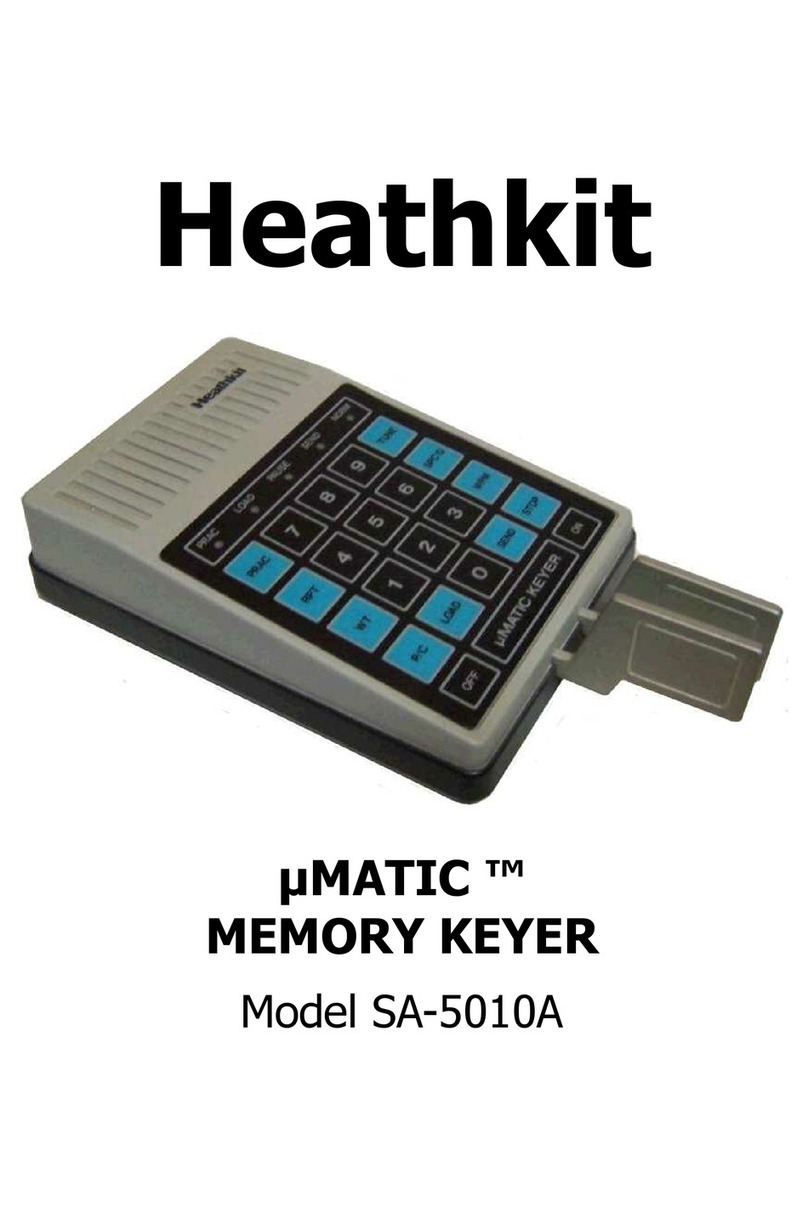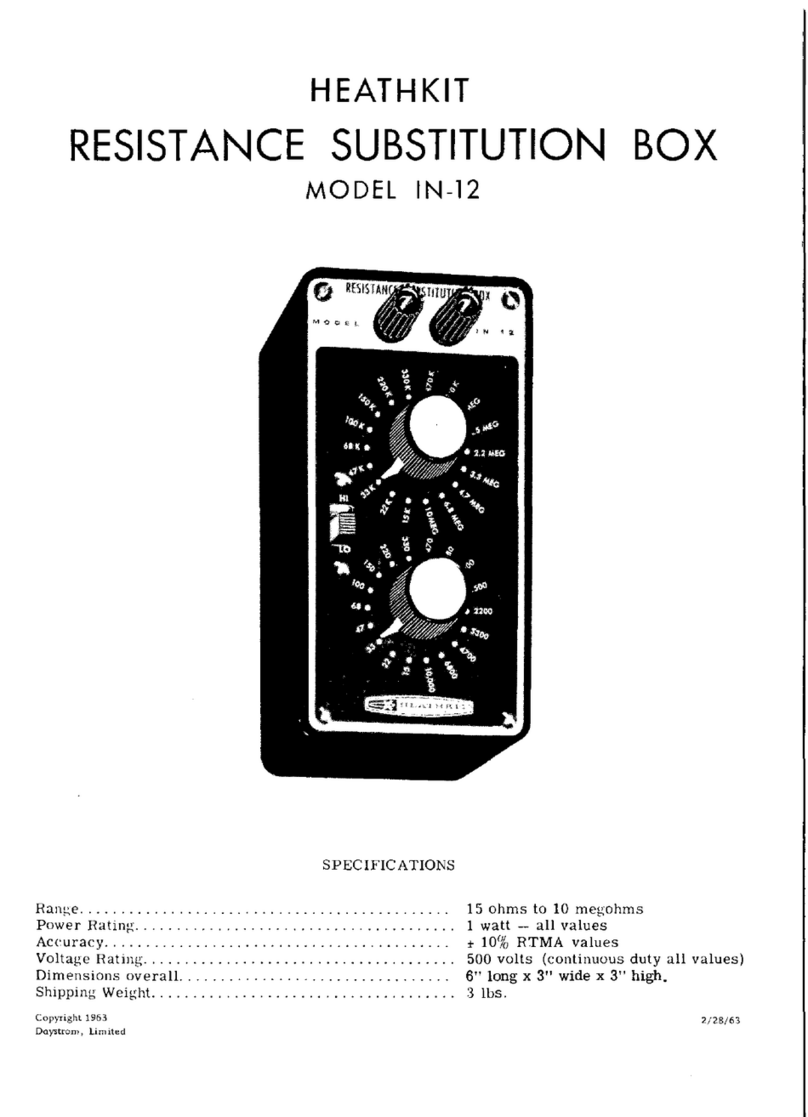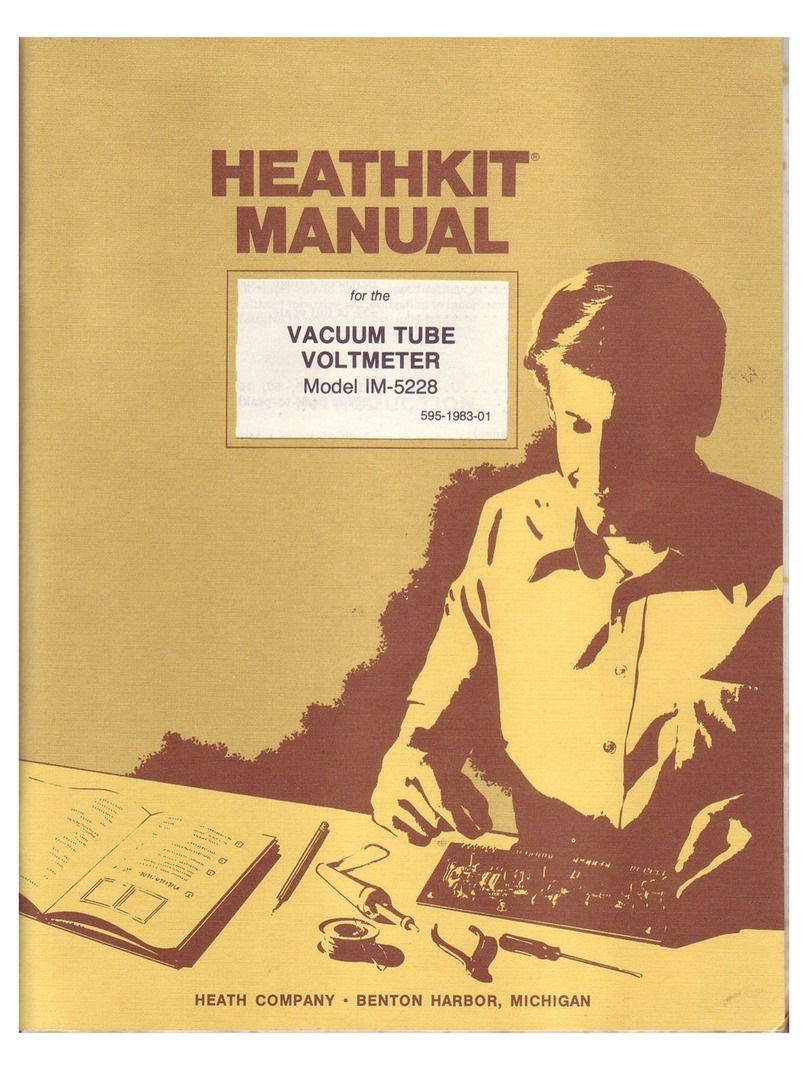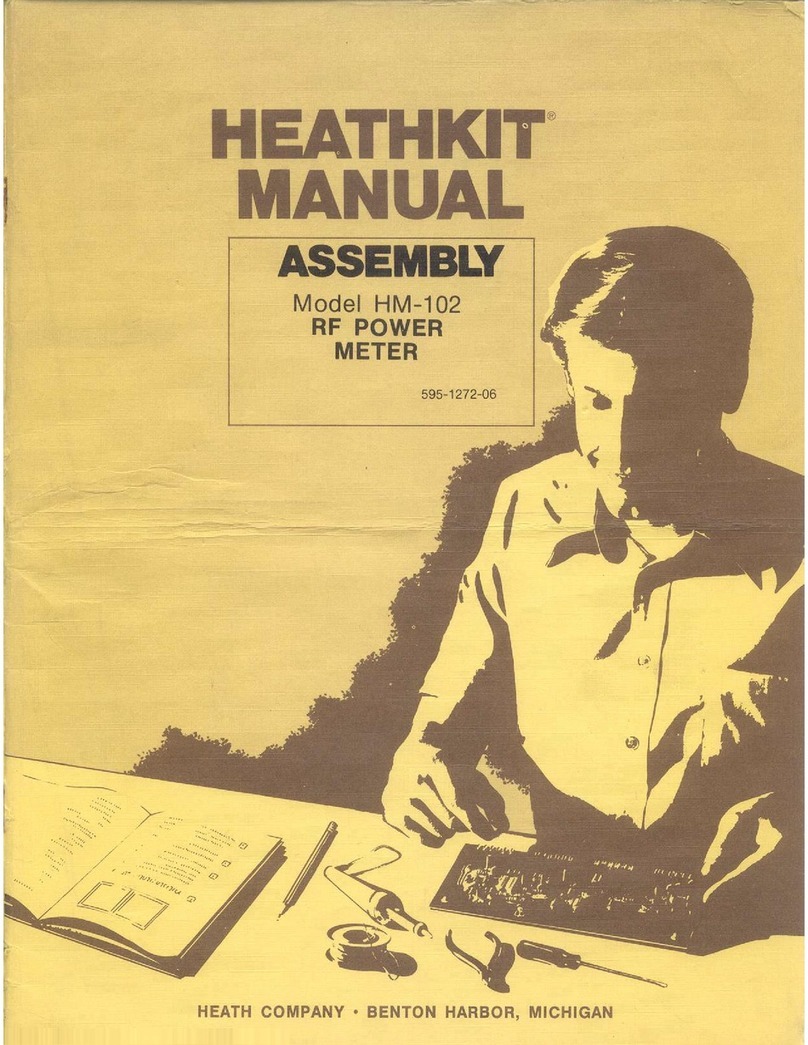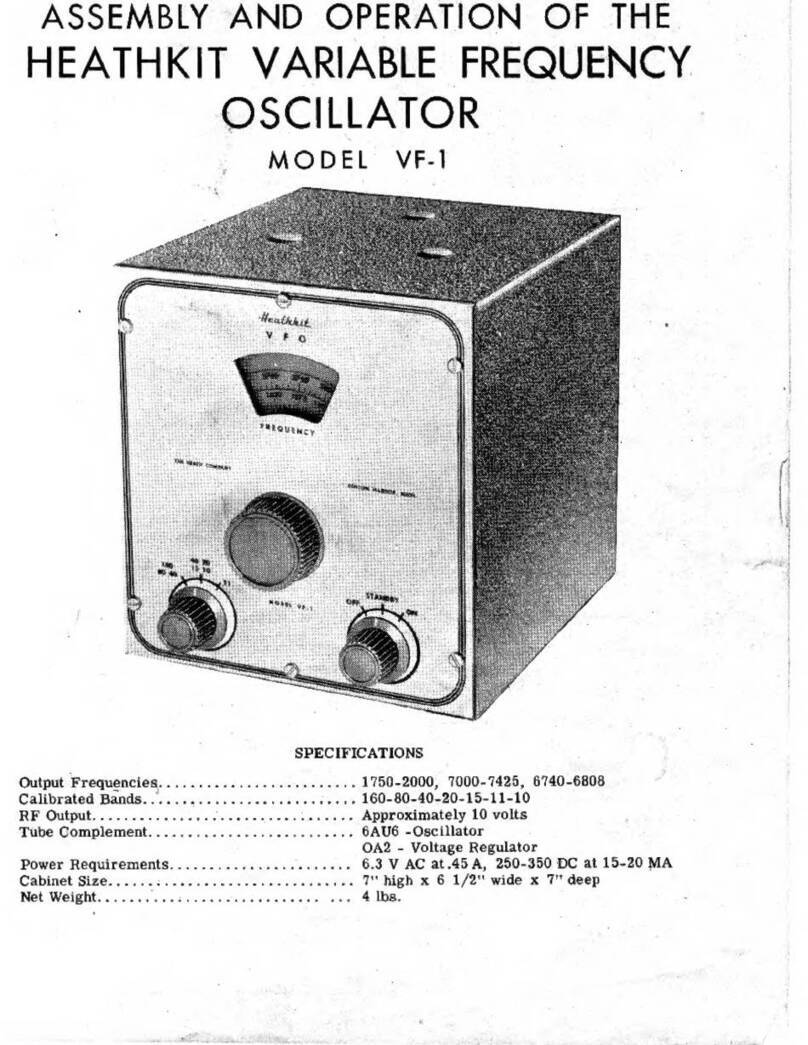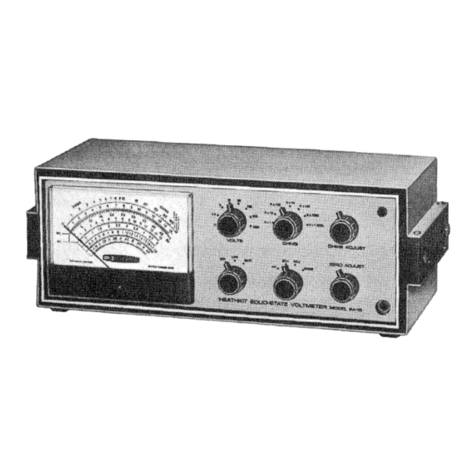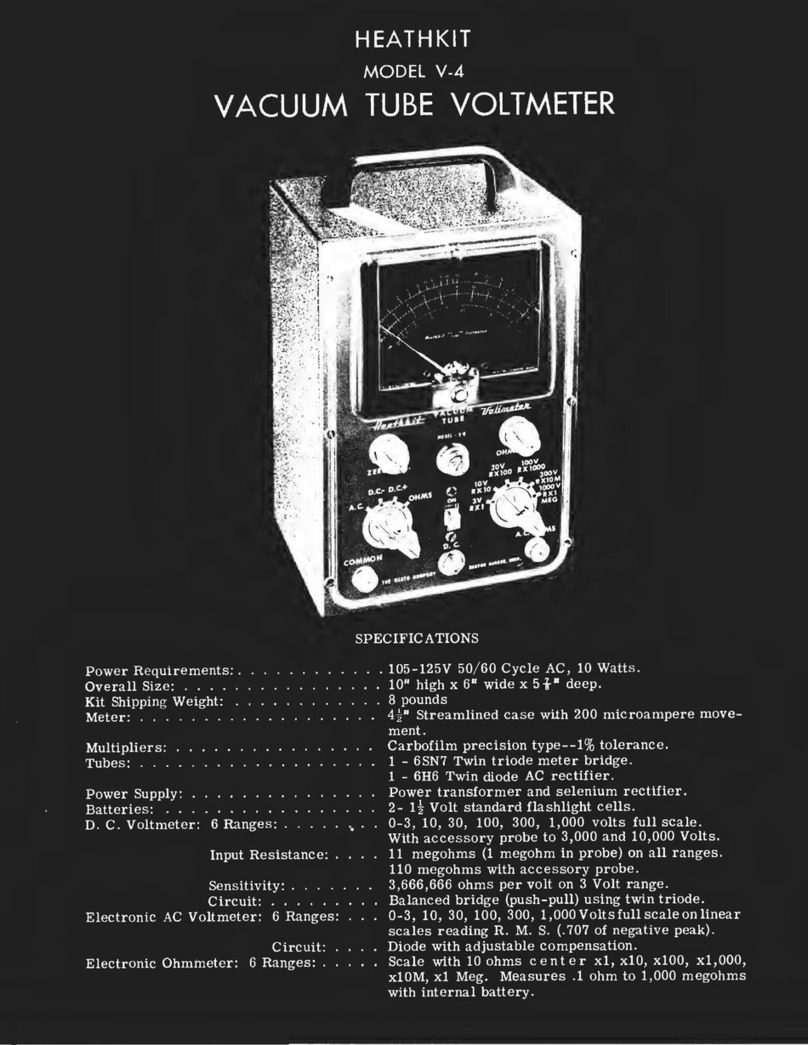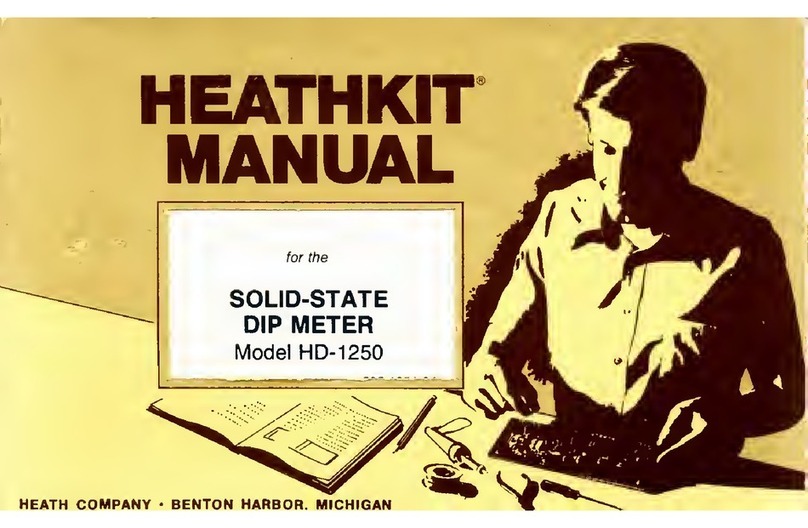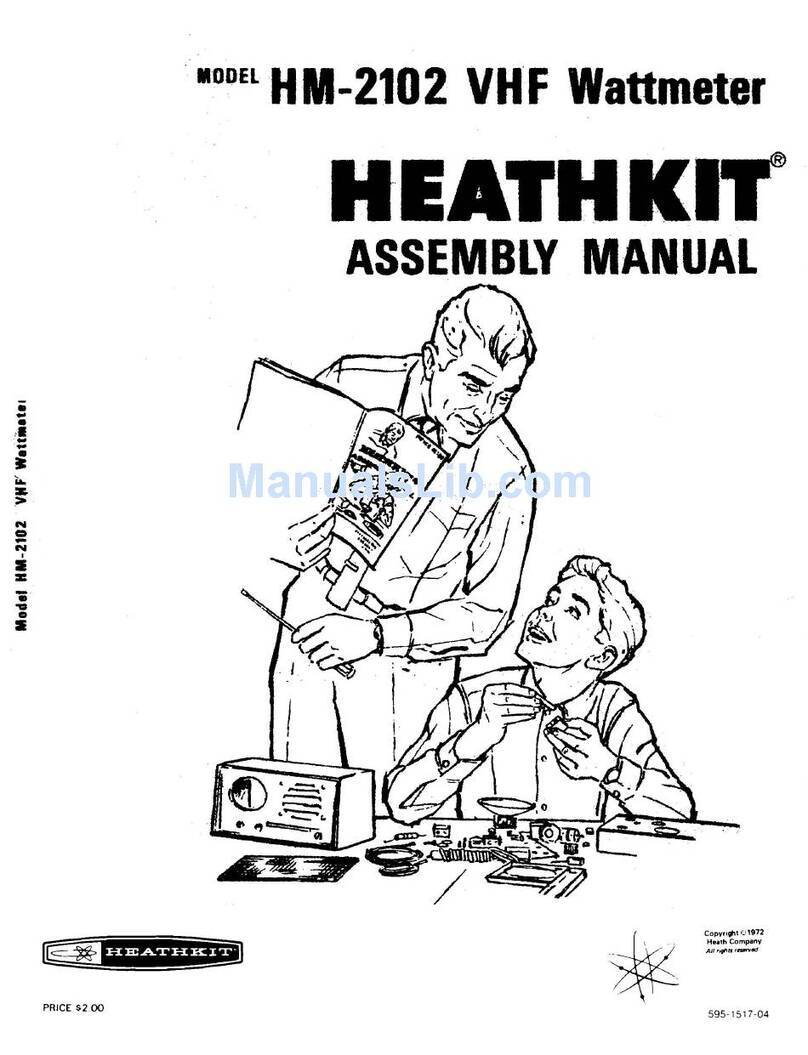
,,,,,,,,,,,,,,,,,,,,,,,,,,,,,,,,,,,,,,,,,,,,..
USEFUL
,,,,,,,,,,,,,,,,,,,,,,,,,,,,,,
''"''
.....
''
,,,,,,
INFORMATION
FOR
KIT
BU
IL
DE
Rs
''"'''''''''''''''''''''''''''"''''''''''''''
''''''''''''''''''''"''"'"'''''''''''''''''''
Resistors
are
identified
by
a
color
code
used
in
several
bands
around
the
resistors.
There
are
two
general
types
o~
resistors.
One,
the
uninsulated
type,
has
the
connecting
wires
bound
around
the
ends.
The
other,
the
insulated
type,
has
the
wire
connected
internally
and
coming
out
the
ends.
The
resist-
ance
code
uses
three
bands
or
colors,
while
a
fourth,
usually
silver
or
gold,
indicates
the
tolerance
.
The
colors
are
arranged
so
that
the
first
two
indicate
the
first
two
figures
of
the
resistance,
while
the
third
indicates
the
number
of
digits
(zeros
or
multiplier)
which
follow
the
first
two
figures
=l!ID=~w.
=m~~~
F
'Aw
On
uninsulated
resistors,
the
body
is
the
first
figure,
the
end
color
the
second
figure,
and
the
dot
the
number
of
digits.
On
insulated
resistors,
the
band
nearest
the
end
is
the
first figure,
the
next
band
is
the
second
figure
and
the
third
band
the
number
of
digits.
--1~~~
~1W.
f=1w.
WATTAGE.
Resistors
are
rated
as
to
wattage
(power
dissipation)
according
to
size.
The
chart
shows
approximate
sizes
which
vary
with
manufacturers
.
To
determine
wat-
tage
size
necessary
multiply
current
through
resistor
in
amperes
by
voltage
drop
across
resistors
in
volts.
Example
- A
plate
loading
resistor
for
a
tube
drawing
10
milli-
amperes
(.01
Amperes)
has
a
voltage
on
one
side
of
300
volts
and
on
the
other
side
200
volts,
giving
a
drop
of
100
volts.
Therefore
100
volts
X .OlA. = 1
Watt.
=1111
A
higher
wattage
resistor
can
always
be
substituted
for
smaller
size.
WATTAGE
SIZES
Uninsulated
Body
Color
End
Color
Dot
Color
UNINSULRTED
Examples
INSULAT£D
TYPE
Insulated
First
Ring
Second
Ring
Third
Ring
TYPE'
Forth
Band
(·01or
1
~
~1rJ111t
Ftg11re
~econd
.t""lgure
N_
u1nbt"r
of
Dlglt11
!Or
Tolerance
Bl
a
ck
0
Br
o
wn
l
He
ct
2
Or
a
ng
e 3
Ye
llow
4
Gr
ee
n 5
Blue
fi
Viol
et 7
Gr e y 8
Whit
e 9
llF:!"J!"TANCF:
I~
OllM~
50
250
1
fi
00
~o
.
ooo
2
20,000
l Me g o
hm
0 No
ne
l 0
2
00
3 ,
000
4 0,
000
5
00,000
6
000.000
7 0,
000
.
000
BROWN
RED
ORANGE
8
00
.
000.000
1 2
000
9
000
.
000.0
00
Some
Popular
Sizes
of
Resistors
DOD\'
OR
J<'JR!"T
HAND
J<}ND
OR
~t:l'ONU H .
\ND
G r
ee
n
Bl
ac
k
Ht'<l
(;
n
·,·n
B ro
wn
G
n·~·
n
6ra
ng
e
Bla
~
k
TI0d Hect
Bro
wn
Bl
ac
k
Th
e
fo
urth
rin
g
or
oth
<'
r
(•nd
may
b e s
il
ver
(1
0%
t
olera
n
ce
) or
go
ld
(5%
t o l
f'
r n n <'e ) 0 1·
it
m
ay
h e o
n1it
t
t·d
e
ntir
e l y
\V
h
ic
h
indicatr·s
20"1
to
h ·
ra
n
cl·.
Condenser
Code
Condensers
use
the
same
code
as
resistors
and
are
read
in
micromicrofarads.
""
BROWN
RED ORAllluE
1
z.
000
DOT
OR
TlllRD
HAND
Dlac
k
Hro
w n
H
<>
d
Orang-"
Y
ello
w
Green
If
there
is
one
row
of
dots
,
they
are
read
in
direction
of
arrow
or
if
manufacturer's
name
appears
in
the
same
di
re
c
tio
n
as
name.
If
two
rows
of
dots
appear
, it
can
either
pc
of
two
different
codes:
The
RMA
or
the
AWS
(American
Wa
r Sta
nd
ard).
In
the
RMA,
the
top
row
of
dots
are
the
first
three
figures
(carried
to
three
figures)
,
the
bottom
row
are
left
to
right
the
v
oltage
rating,
tolerance,
and
decimal
multiplier.
•
In
the
A
WS
code
,
the
top
row
of
dots
art
the
first
three
figures
while
t
he
bottom
row
are
,
left
to
right
,
charac
te
ris
tic,
tolerance
,
and
decimal
multiplier
.
Examples
R.MA
AVVS
RED
GREEN
BROW~
BROWN
RED
GREEN
13ROWl<J
7~
DOT
ALWAYS
BLACK
GREEN
BLACK
5'
0
500MMF::::
BROWN
0
.0005
z 5 0 1 2 5 0
2SO
MMF
:::.
.000
ZS MF
12SO
MMF
=.0012
SMF
Some
Commonly
Used
Sizes
of
MMF.
10
5::>
100
250
500
1000
3000
10
,000
MF
.
.00001
.00005
.0001
.00025
.0005
.001
.003
.01
FIRST
DOT
Brown
Green
Brown
Red
Green
Brown
Orange
Brown
Condensers
SECOND
DOT
Black
Black
Black
Green
Black
Black
Black
Black
The
tolerance
rating
corresponds
to
the
color
code, i.e.,
red-
2
o/r
,
green
- S
o/r
, etc.
THIRD
DOT
Black
Black
Brown
Brown
Brown
~ed
Red
Orange
The
voltage
rating
corresponds
to
the
code
multiplied
by
100.
Example:
Orange
dot
-300
volt
rating
;
Blue
-600
volt
rating.
